
Gove to Darwin
- Gove to Wigram Island
- Wigram Island to Oxley Island
- Oxley Island to Alcaro Bay
- Alcaro Bay to Fannie Bay
- Fannie Bay to the marina
Gove to Wigram Island33 nautical miles
The first sail was only to be a short one, we needed to match our timing for the Hole In The Wall. We motored out of the busy Gove Harbour past the ship loading facility while they were loaded another load of refined bauxite heading to a new life as aluminium. It wasn’t long before we raised 3 sails and headed out through the anchored ships waiting to be loaded. A family of 5 dolphins joined us for the sail, darting across our bow and back again for more then an hour. A baby swam exactly synchronised with its mother, breaching in exactly the same position every time. It was a fantastic sight. We haven’t seen too many dolphins and they have only swam past, not stopping to play. This family surely made up for that. We arrived at the anchorage at Wigram Island in the early afternoon and settled in for dinner. The island is surrounded by pearl farms and we selected one of the only bays without pearl nets. Just happened to be the one with the caretakers house overlooking the bay, nice and calm, with a magic view.
Wigram Island to Oxley Island – 232 nautical miles and Oxley Island to Alcaro Bay – 69 nautical mile
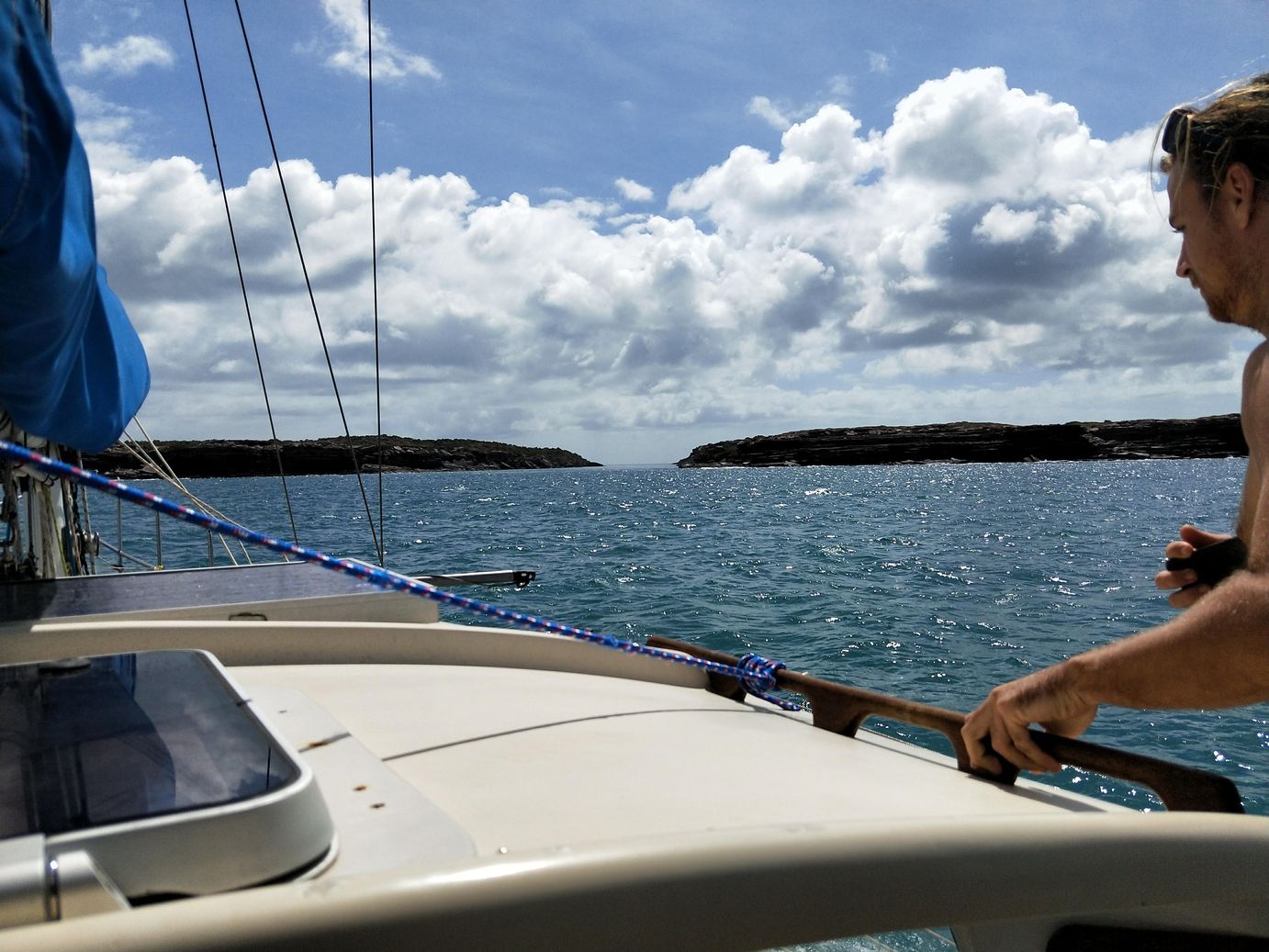
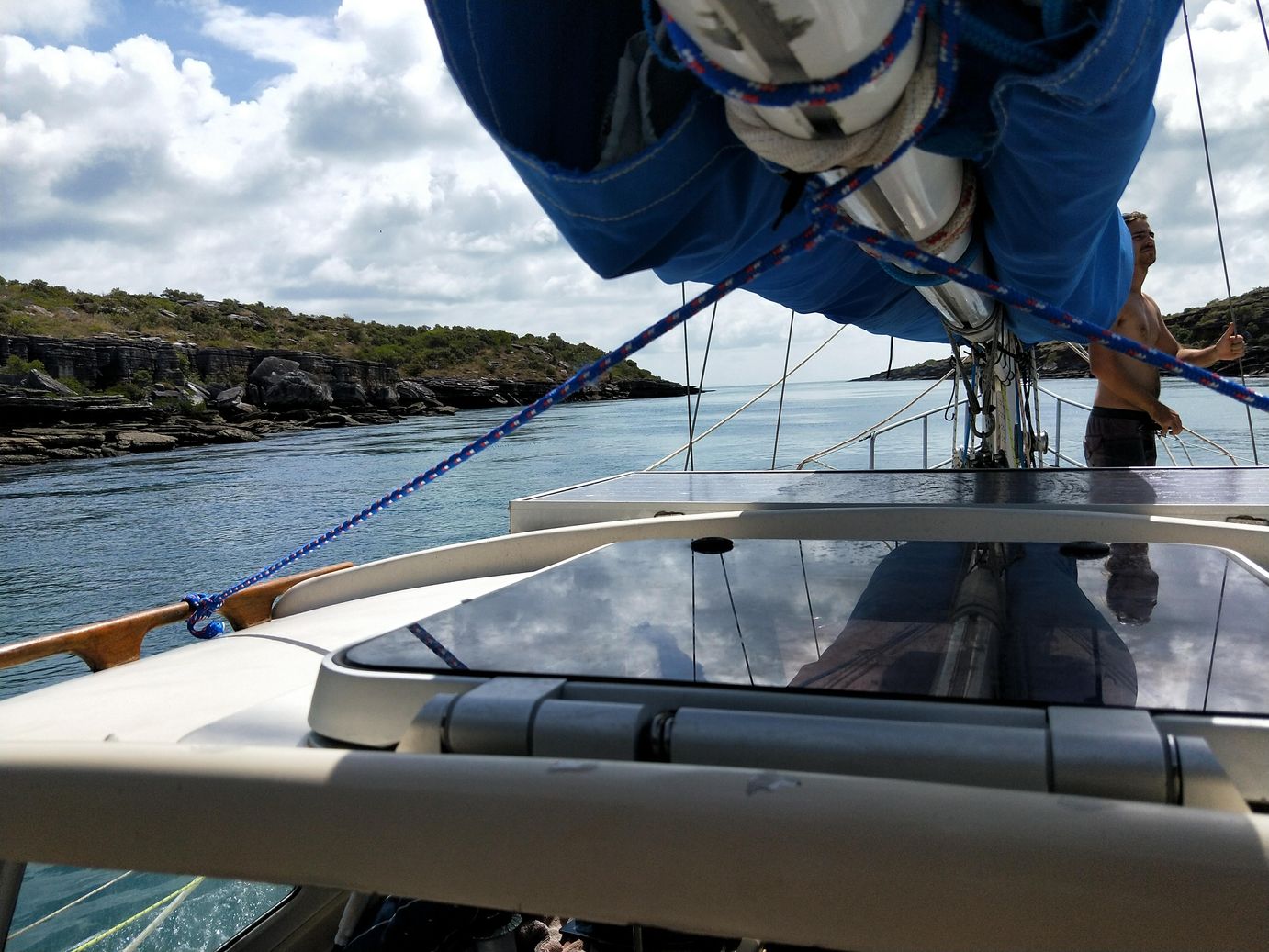

This was to be a long leg, only because there is simply nowhere to stop. This leg covers both the Hole In The Wall or Gugari Rip and Van Diemens Gulf. Warnings on the chart state that the rip runs at 12 knots, that’s a lot faster than we can move Caree. The Gove Boat Club put out an information sheet about the timing of the currents however doing some research on the internet before we departed Gove, a lot of people stated that this information was slightly out, a lot out or simply wrong. I decided to go with my gut feeling and go with the Guluwuru tide indicator that is only a few miles from the rip. As we approached the rip another yacht and a large luxury motor vessel also made the entry, reassuring us of the timing. The ride through was magic, fantastic scenery and the water was flowing. In the end we were 1 minute out after a 6 hour motor sail, with the tide change we had a great ride through. Although we went through within a minute of high tide the water rate was still exhilarating with Caree reaching a speed over ground of 11 knots with no sails up and the engine at idle. We listened to the boats in front of us chatting on the radio, Ozzie Mozzie was a 33 foot trimaran heading to Darwin for the Darwin to Dilli Rally. We would hear Ozzie Mozzie on the radio a couple more times including Border Patrol checking up on him and leaving us alone this time. He was trying to outrun the 20 knot winds forecast for Saturday, we were hoping for at least 20 knots to push us along a bit quicker. The other was a large luxury motor vessel, the owner was heading to Darwin on an annual trip, the first time in this vessel. With not much wind we motor sailed all the way. On reaching Oxley Island we decided to continue to Alcaro Bay as it was nearly daylight and we wanted to sleep in the dark.
Alcaro bay was a magnificent anchorage overlooking the Cape Don lighthouse to the West. We anchored up and prepared a meal while watching the most magnificent sunset I have ever seen, it lasted over an hour.
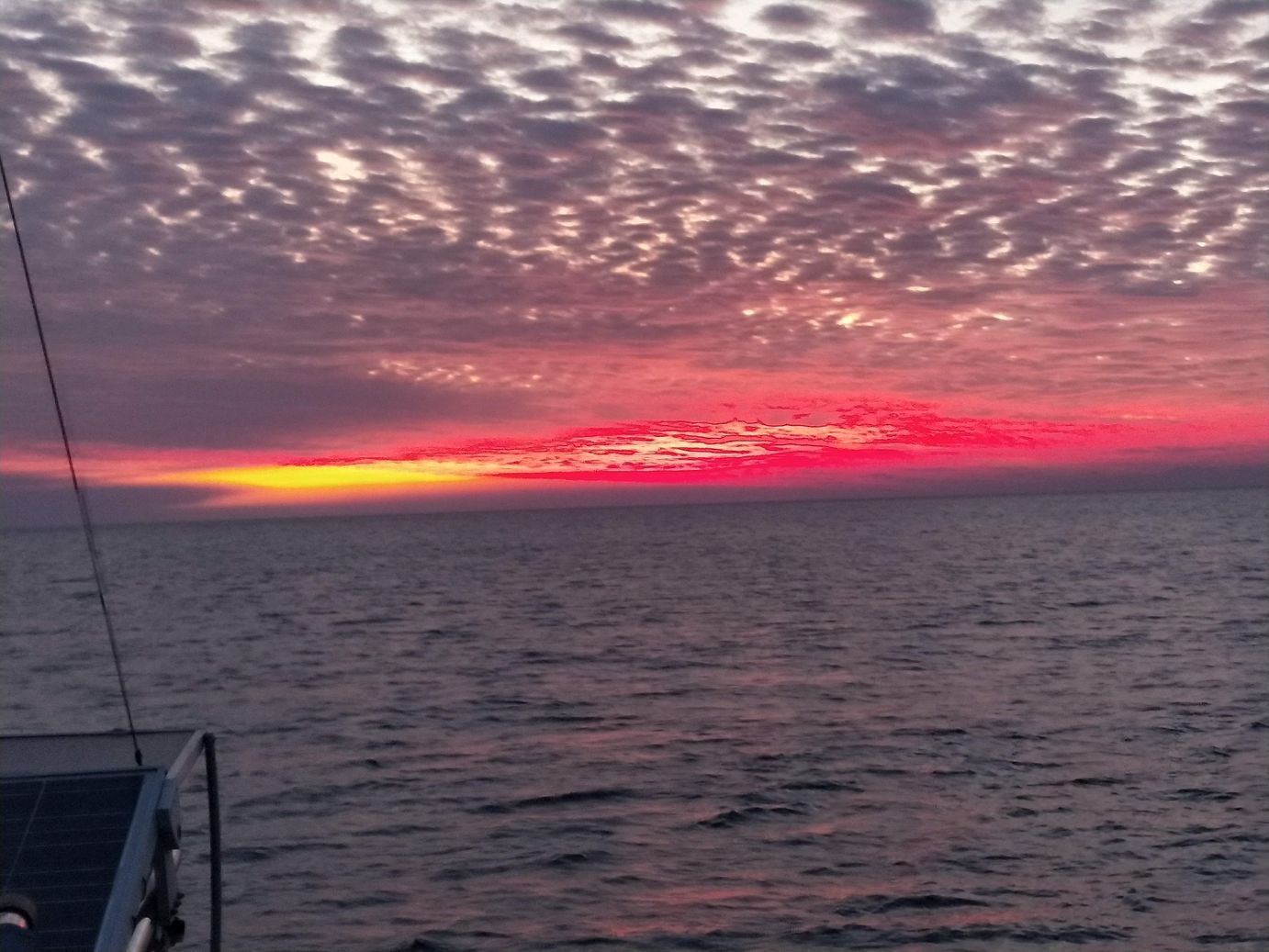
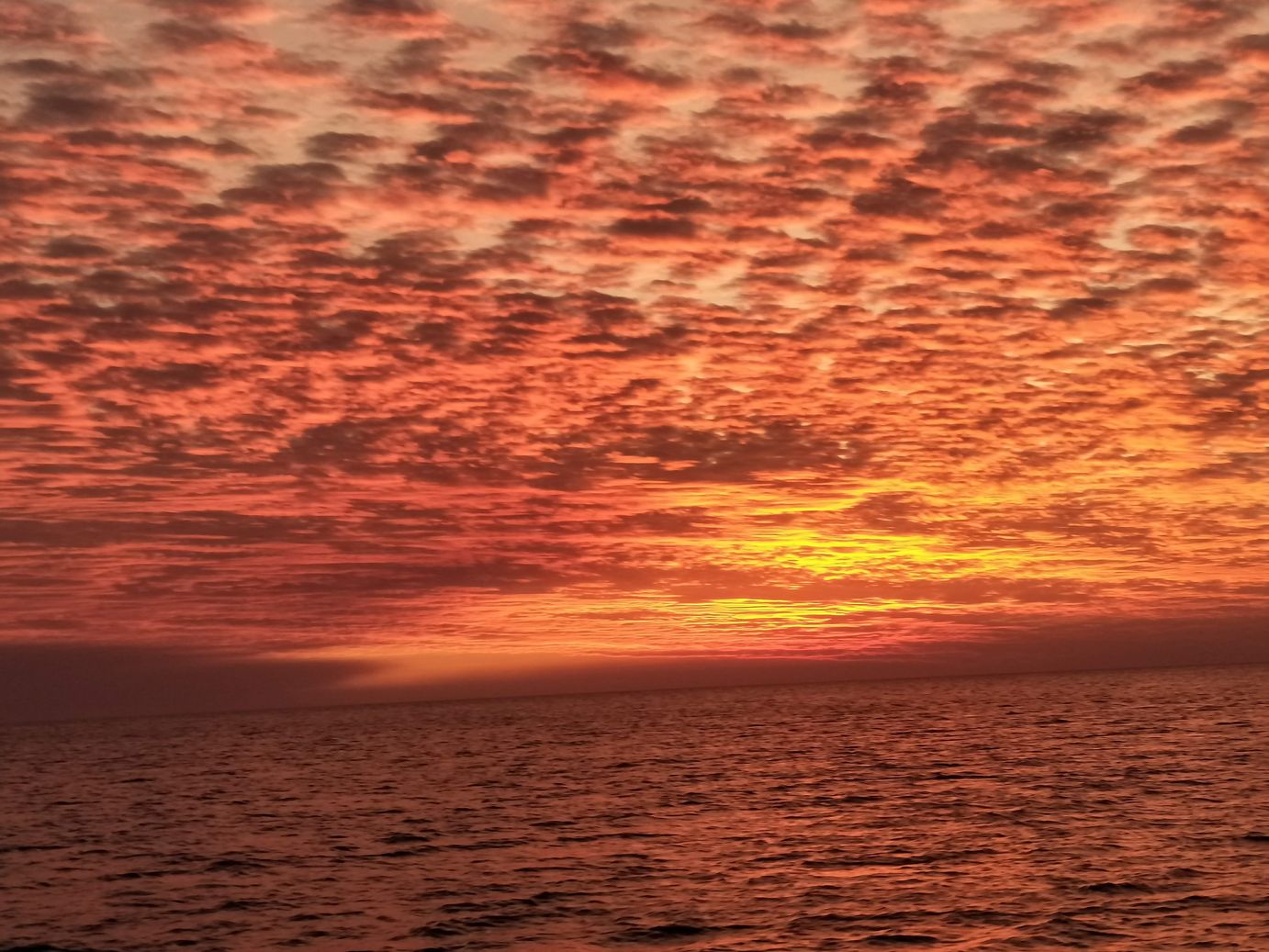
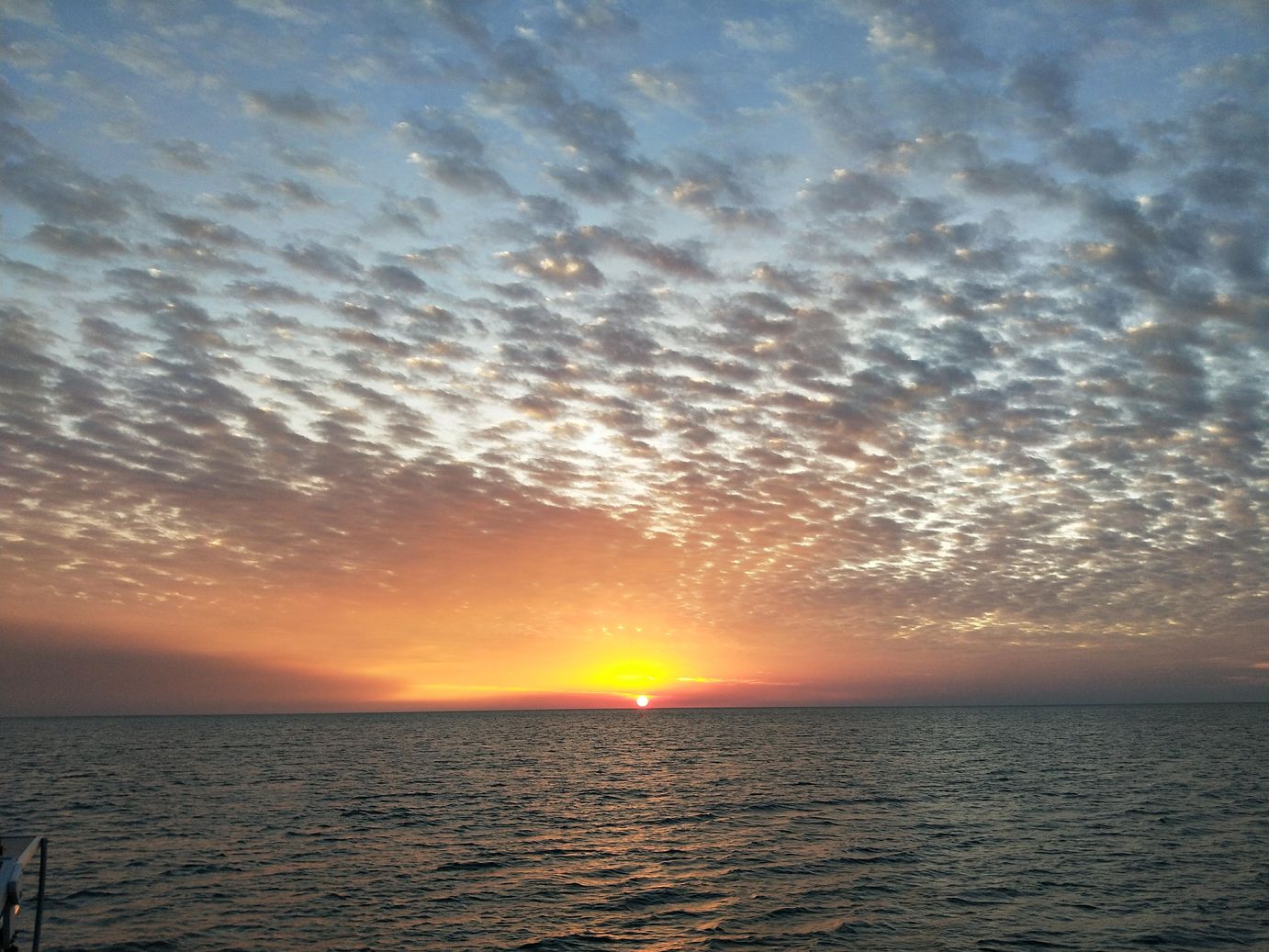

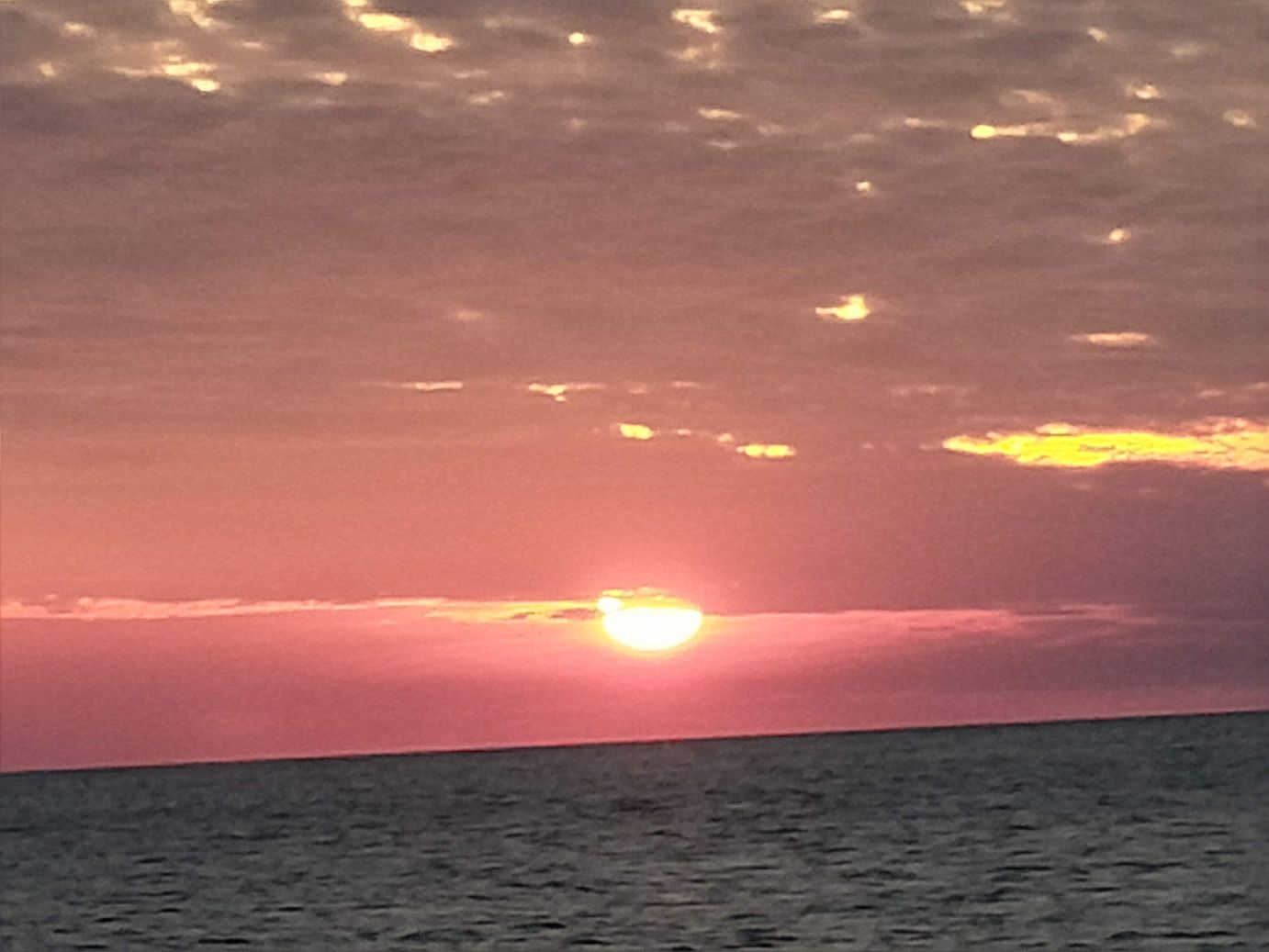
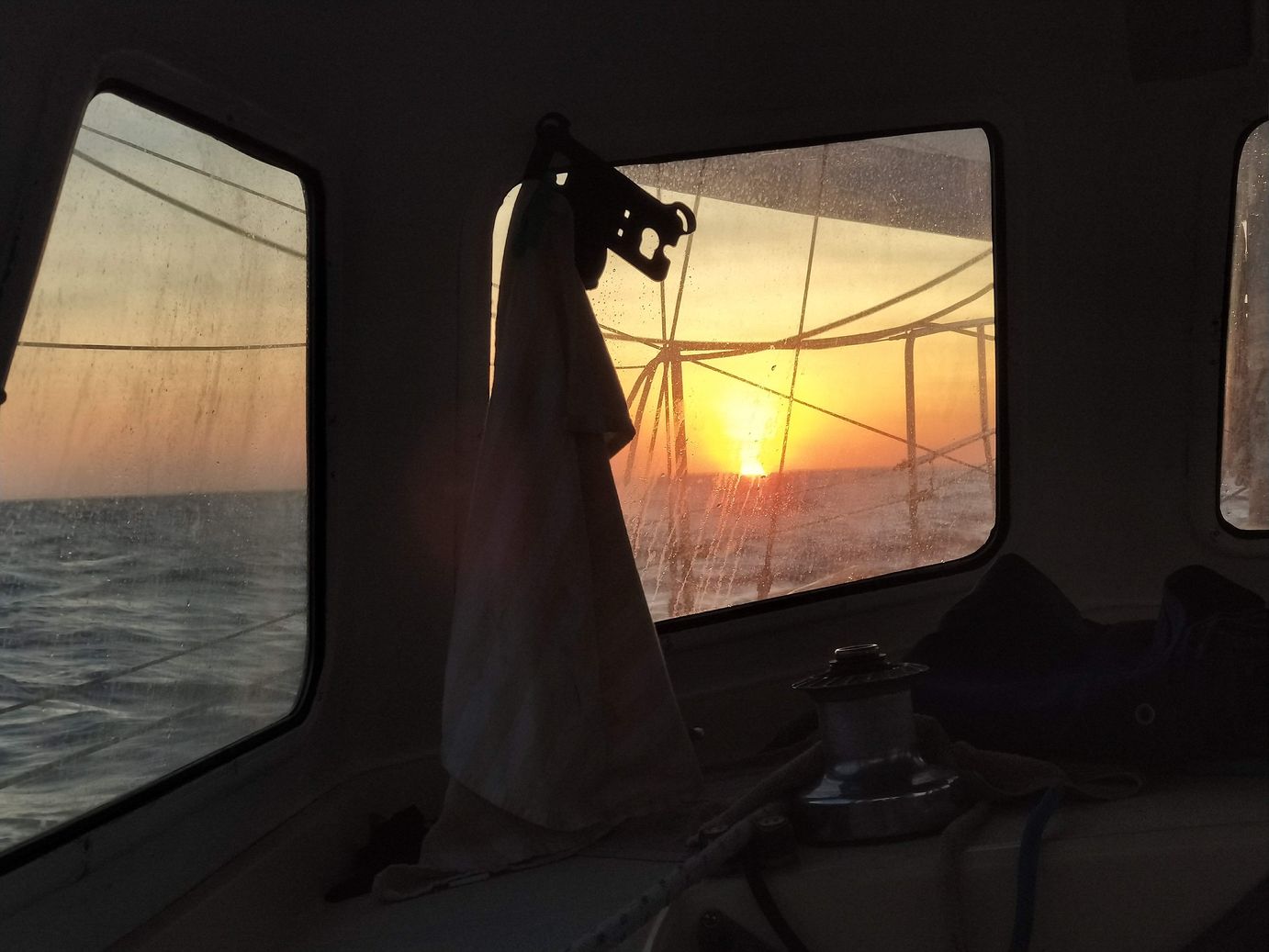 Alcaro Bay to Fannie Bay – 95 nautical miles
Alcaro Bay to Fannie Bay – 95 nautical miles
We departed Alcoro bay with no wind and flat seas, not ideal for sailing. That soon changed as we rounded Cape Don and were faced with 3 to 4 metre seas and 25 to 28 knots of wind. Speed over ground headed up over 10 knots with the current ripping through. It was heavy going, nothing like the 14 knots and 2ft seas in the forecast. Caree proved her stability in rough seas, seeing her launch over 4 plus meter waves and land the other side as if nothing was there. Even turning into and out of the wind to raise and lower sails was no problems in the big seas. We were enjoying the ride and making good time, well up until the tide changed and the wind dropped to just about nothing. The speed over ground dropped and dropped until it was below 3 knots and we decided to anchor until the tide changed at 11:30pm. At 11:30pm it was back out into the channel and we were off again, 10 knots lasted until we cleared the channel, then 8 knots lasted until Fannie Bay, we pulled in and dropped the anchor and grabbed some sleep.
Fannie Bay to Tipperary Marina – 8 nautical miles
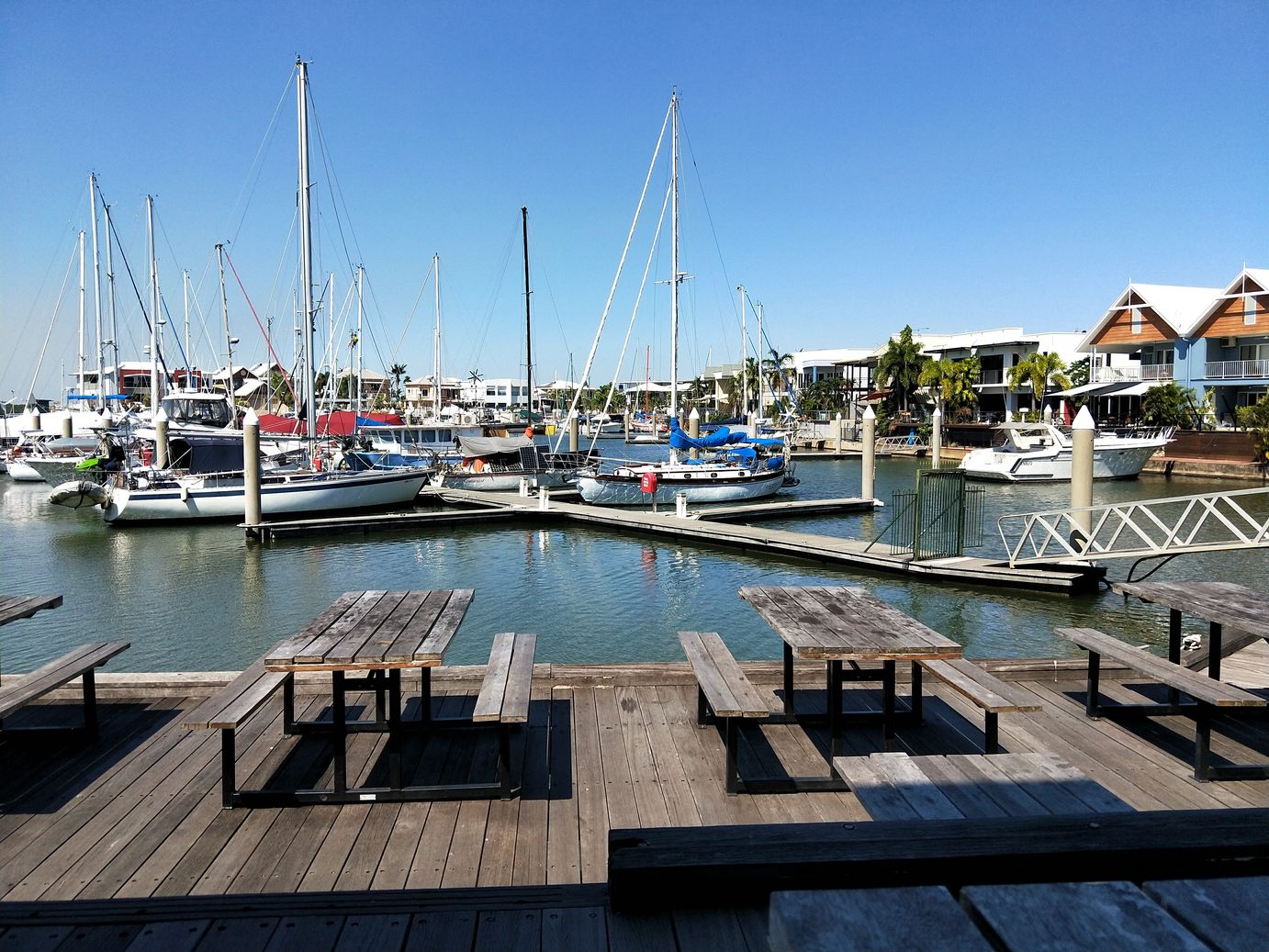
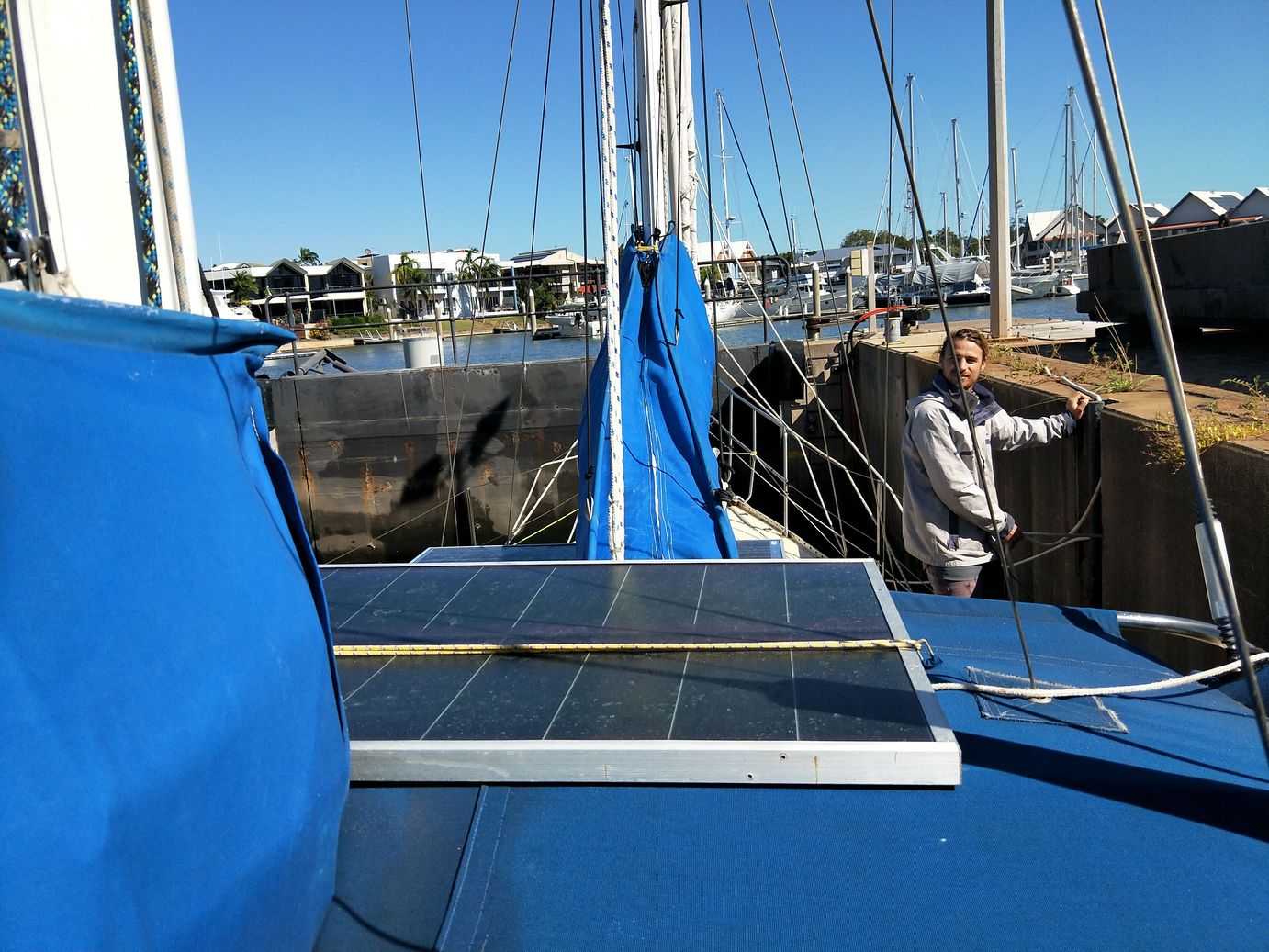
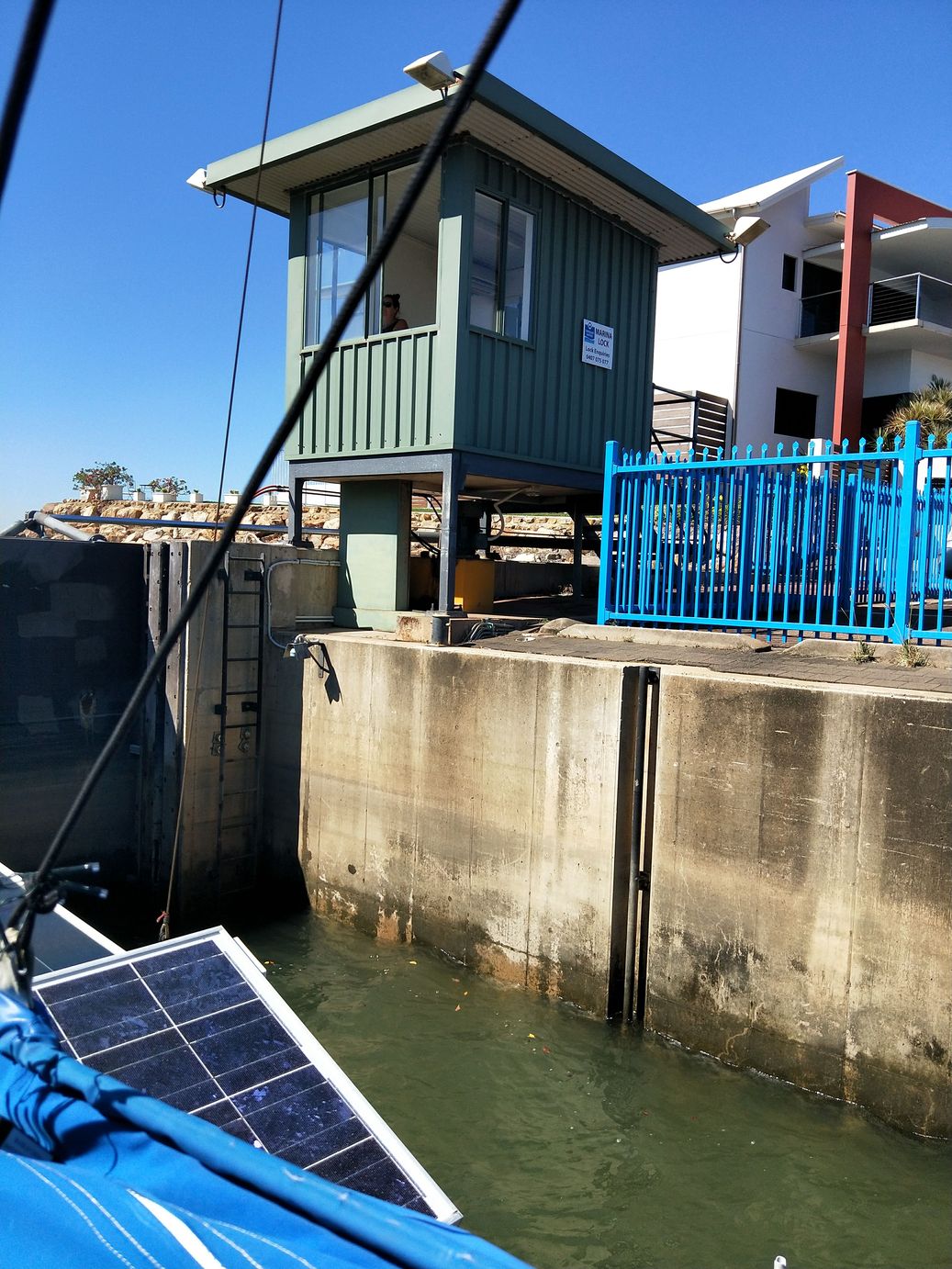
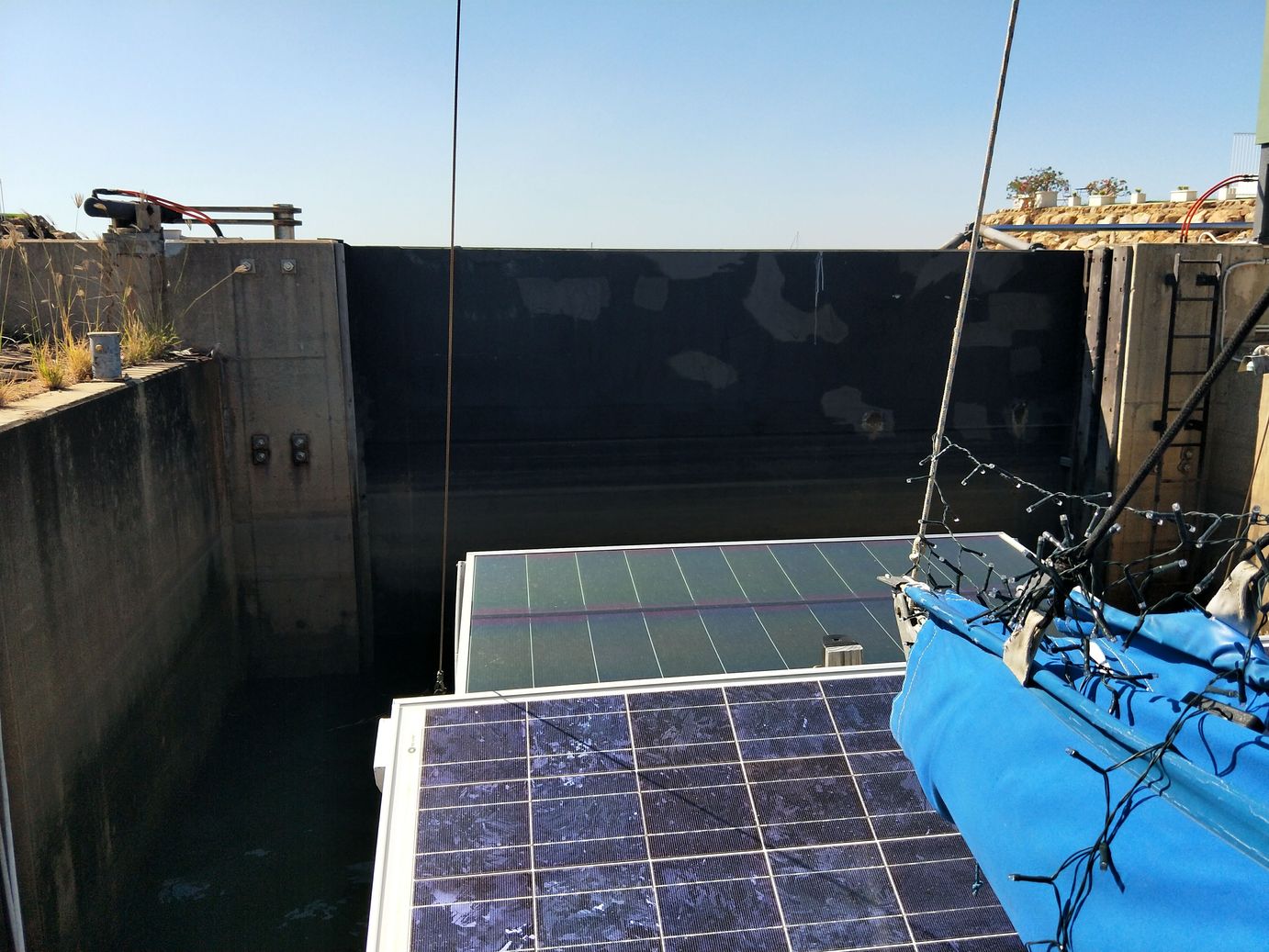

We had to enter the marina on a high tide as the creek we had to navigate is a mud flat at low tide. All Darwin marinas are behind locks due to the 10 metre tide range, something I never expected to negotiate in Caree. We set off from Fannie Bay in 25 knot winds and wind whipped waves. Rounding the harbour entrance saw the waves right on the nose and with a decent amount of throttle we belted into them sending them over the top of the bow and landing some into the cockpit. What would normally be a 7 knot cruise without current was a 3 to 4 knot belting all the way to the marina entrance. While we were negotiating the creek the local rangers were pulling a 4 metre crocodile out as we were to find out later on the news and plastered over the front page of the newspaper the next day. The lock isn’t too much bigger than Caree and with 25 knot wind hammering us around it was a little nerve wracking, however we made it without damage and were soon safe in a pen.